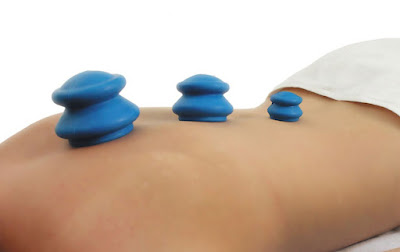Traditional
Chinese Medicine (TCM) cupping therapy gave birth to modern Suction Cupping
Therapy Brisbane. The TCM practitioner sets a flame inside a glass, pottery, or
bamboo cup in traditional cupping therapy. The practitioner swiftly lays the
open end of the cup on your body after the flame sucks the oxygen out of the
cup, creating a vacuum.
In
Suction Cupping Therapy Brisbane the
vacuum in the cup creates a suction and negative pressure seal on your skin,
lifting your skin and underlying tissue. Blood rushes to the area as a result
of the stimulation, which promotes qi flow. TCM practitioners usually leave the
cups in one place (stationary cupping) for around 10 minutes, though they do
occasionally move the cups.
Traditional
cupping differs from massage cupping in that the cups are used to conduct
massage strokes such as scooping the cup's edge over a muscle, forceful
circles, or long strokes over the muscles. The massage therapist at massage therapy clinic Brisbane adds
oil to your skin before placing the cups on your skin to make moving them
simpler and smoother.
Some
massage therapists Brisbane employ
the previously mentioned technique (called fire cupping). A manual vacuum set
is used in a newer technology. The practitioner lays a cup on your body and
removes the air with an associated pump.
The
skin becomes crimson after a cupping massage, indicating that blood is rising
to the surface. The suction pulls the skin up into the cup, forcing the blood
vessels on the surface to dilate. Because a little amount of blood may leak
from peripheral capillaries, this suction might cause discolouration. Within a
few days, the discoloration generally dissipates.
This
sort of massage, like all types of massage, is not for everyone, so make sure
your massage therapist is aware of any medical concerns you may have. Massage
cupping is not recommended in cases of irritated skin, high temperature,
convulsions or cramps, or easy bleeding. Cupping is also not recommended for
the abdominal area or the lower bacilli.
